A relic hunter dubbed “Indiana Bones” has lifted the lid on a macabre collection of 400-year-old jewel-encrusted skeletons unearthed in churches across Europe. Art historian Paul Koudounaris has hunted down and photographed dozens of gruesome skeletons in some of the world's most secretive religious establishments. Incredibly, some of the skeletons, which took up to five years to decorate, were even found hidden away in lock-ups and containers. They are now the subject of his latest book, which sheds light on the forgotten ornamented relics for the first time.
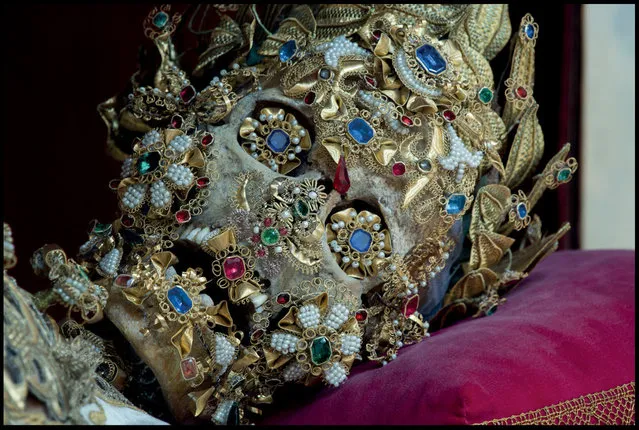
This St Benedictus was received by the church of St Michael in Munich. (Photo by Paul Koudounaris/BNPS)
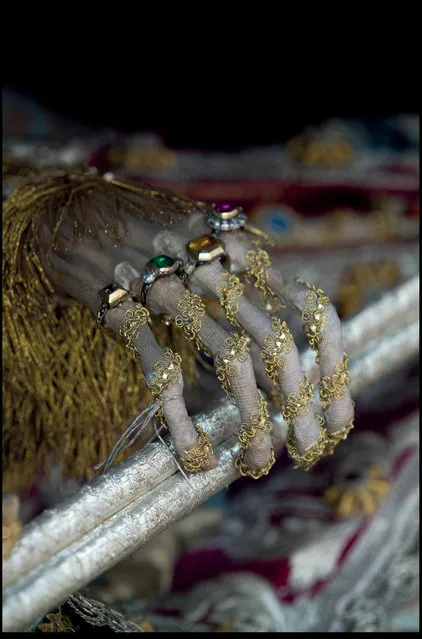
The hand of St Valentin in Bad Schussenreid, Germany. (Photo by Paul Koudounaris/BNPS)
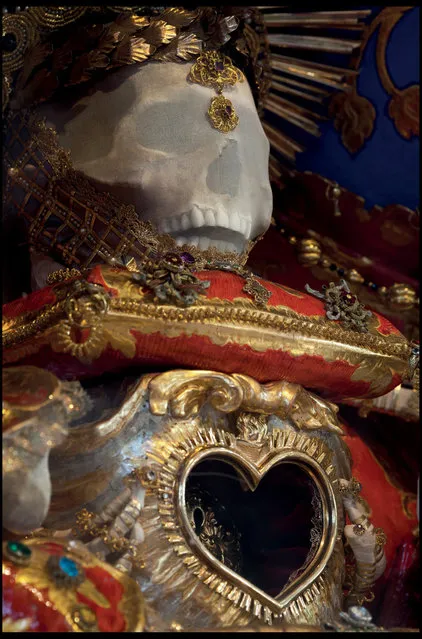
St Felix, at Sursee, Switzerland. (Photo by Paul Koudounaris/BNPS)
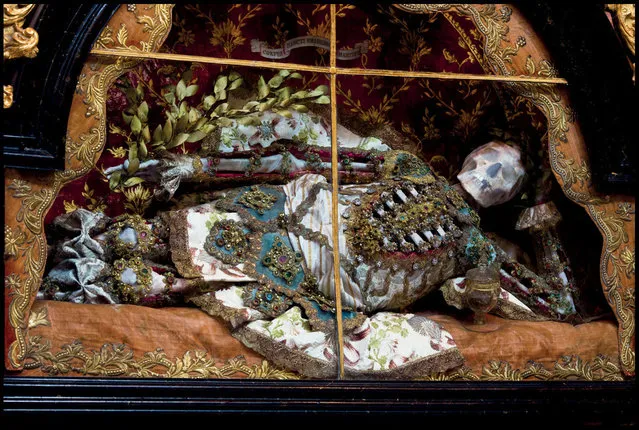
St Friedrich at the Benedictine abbey in Melk, Austria. A relic hunter dubbed “Indiana Bones” has lifted the lid on a macabre collection of 400-year-old jewel-encrusted skeletons unearthed in churches across Europe. (Photo by Paul Koudounaris/BNPS)
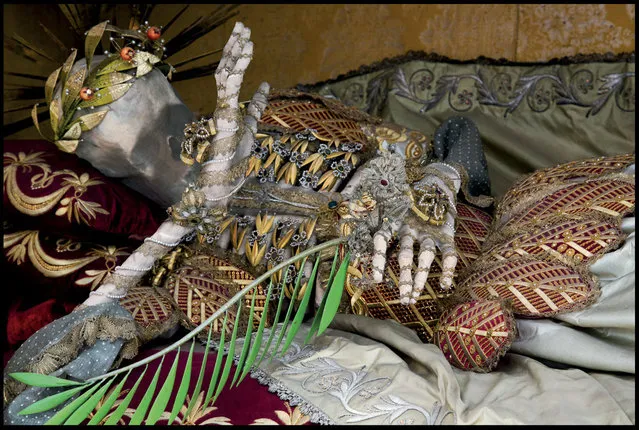
St Vincentus’ ribs are exposed beneath a web of golden leaves’ In Stams, Austria. (Photo by Paul Koudounaris/BNPS)
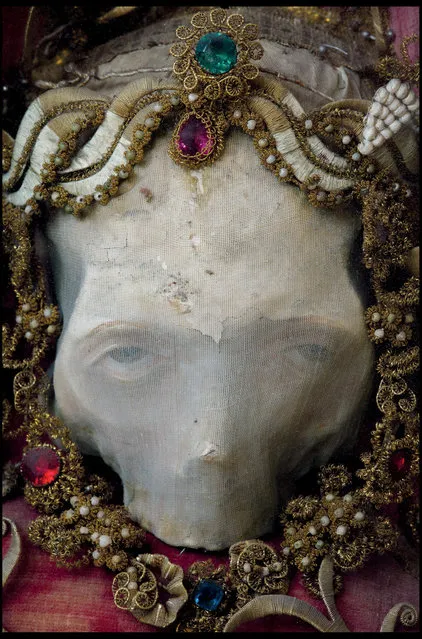
This skull relic was given the generic name of Deodatus as its identity was unknown. (Photo by Paul Koudounaris/BNPS)
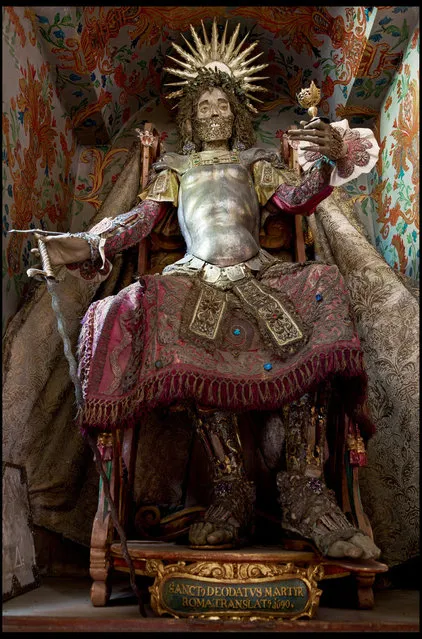
St Deodatus in Rheinau, Switzerland. (Photo by Paul Koudounaris/BNPS)
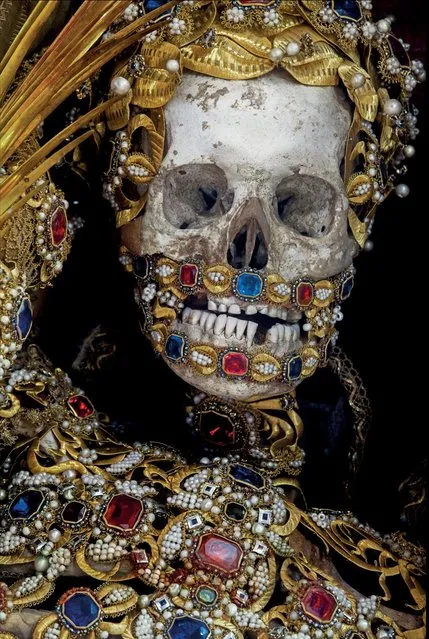
Albertus in the church of St George in Burgrain, Germany. Incredibly, some of the skeletons, which took up to five years to decorate, were even found hidden away in lock-ups and containers. (Photo by Paul Koudounaris/BNPS)
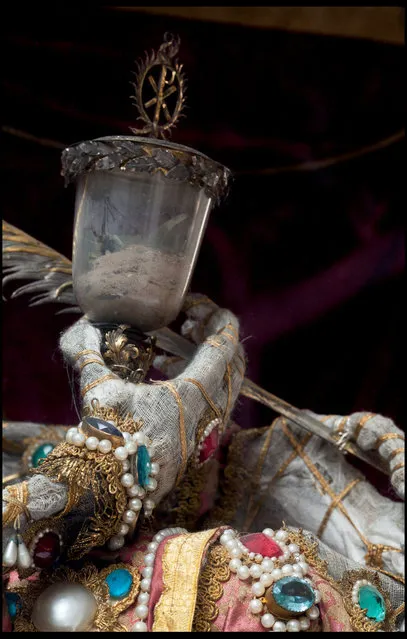
St Munditia, in the church of St Peter in Munich. Art historian Paul Koudounaris has hunted down and photographed dozens of gruesome skeletons in some of the world's most secretive religious establishments. (Photo by Paul Koudounaris/BNPS)
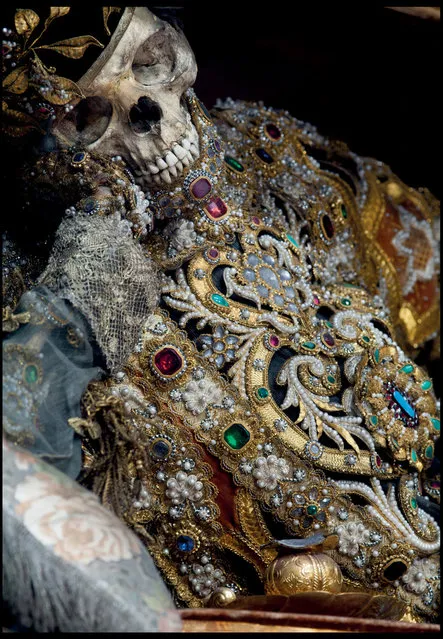
St Valentinus in Waldsassen. (Photo by Paul Koudounaris/BNPS)
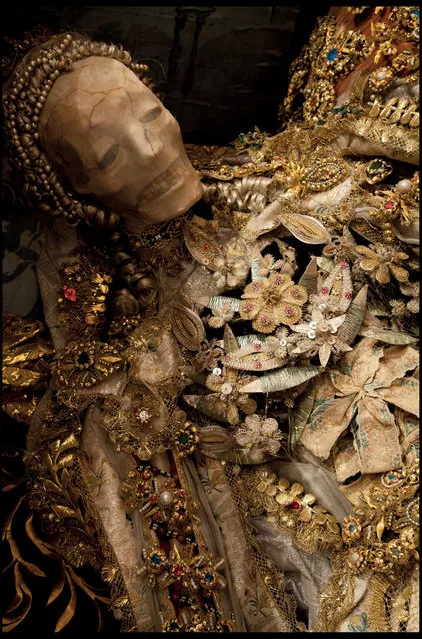
St Luciana arrived at the convent in Heiligkreuztal, Germany and was prepared for display by the nuns in Ennetach. (Photo by Paul Koudounaris/BNPS)
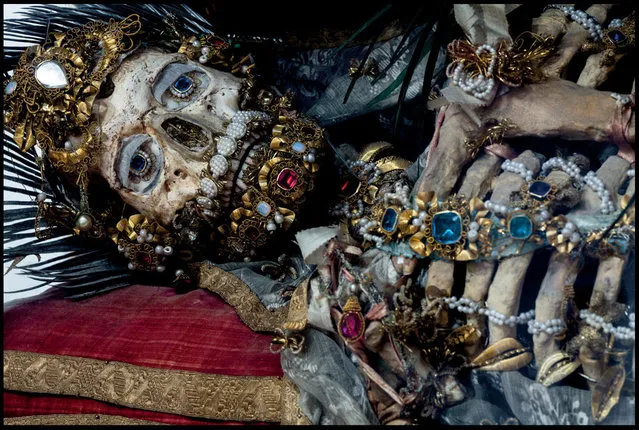
Dripping with gold and jewels – lid finally lifted on the incredible remains of the Catholic saints. St Valerius in Weyarn. (Photo by Paul Koudounaris/BNPS)
08 Sep 2013 07:20:00,
post received
0 comments
